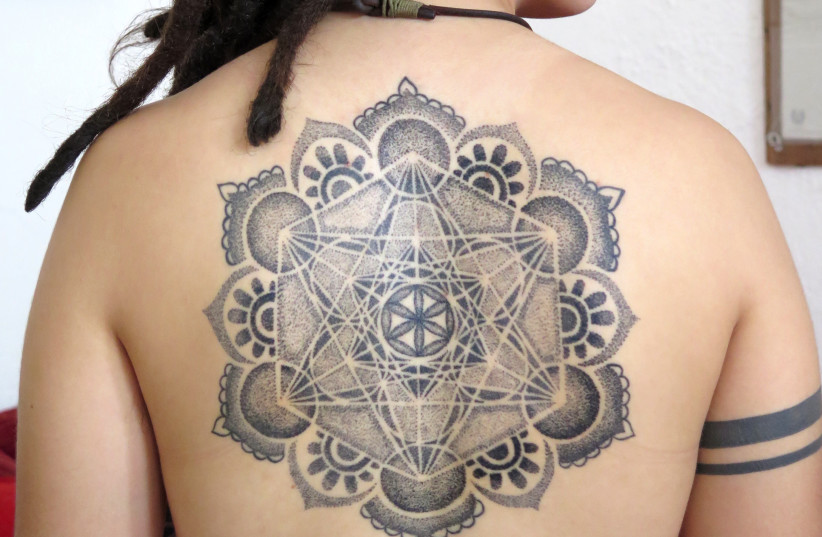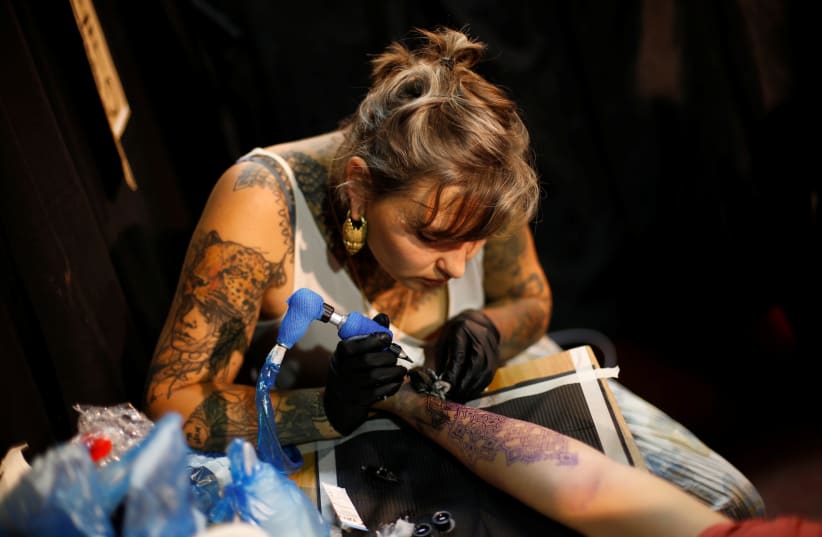
As the temperature warms up and people discard their heavy winter clothing, it is surprising how many Jewish men and women in Israel proudly display their body tattoos.
Although tattooing has been practiced throughout the world for millennia, it was never a practice followed by Jews. In fact, the Torah prohibits it, as it is written in Leviticus 19:28: “Ye shall not make any cuttings in your flesh for the dead, nor imprint any marks upon you.”
That also gave rise to the belief that Jews with tattoos cannot be buried in a Jewish cemetery. A century ago, few Jews would have thought to permanently adorn their bodies with ink.
Yet since the 1990s in Israel, the repulsion for tattoos is losing its significance, and today it is considered “cool” to be able to display body art. That’s the term that has replaced the taboo of tattoos.
In Tel Aviv, at least 10 body art parlors compete for the reputation as having the most innovative tattooists. There are several such establishments also advertising their services in the holy city of Jerusalem, and even the walled Old City can leave its mark on you.


There, Wassim Razzouk runs the arguably oldest tattoo establishment in the world – his family has been tattooing Coptic Christians since the 13th century. He still works with hand-carved wooden stencils to mark the designs, which are mostly of a religious nature, and thus his customers are mostly of an older generation.
In the 19th and 20th centuries, having tattoos was the practice among sailors and the blue-collar section of society, although the Duke of York, later King George V, is said to have acquired a tattoo of a dragon in the 1880s.
Today the practice among the young is to make a statement with tattoos, either political or social. Young ladies often begin by having a butterfly or flower on their shoulder blade, perhaps to indicate their care for the environment, or sometimes even in places only visible during intimacy.
I went to visit a tattoo parlor to hear more, and I chose one in Jerusalem that was listed with many recommendations: Vizi Tattoo and Piercing on Hillel Street. As this was my first visit to a tattoo shop, I expected a bright clinical atmosphere.
What I found instead were colorful rooms decorated with pictures and posters explaining body art, shelves with different colored bottles, and two black beds. I spoke to the owner of the parlor, Vizi Azulay:
Why did you choose this field to express your talent rather than conventional painting?
I was always good at drawing, and during my early teens I saw a TV program about body art and decided that this was what I wanted to do. After my army service, I studied tattooing in Holland, and now I am happy in my work.
Do your clients discuss their reasons for wanting a tattoo?
Unlike years ago, today tattoos are about the family, important life events and memories. Ex-IDF soldiers often like to document for life their service or even traumatic experiences.
During the 18th century, heavily tattooed persons were exhibited in circus sideshows as freaks. Not very complimentary to the art.
In our age of social media, there is much material on display.
Do people tell you exactly what they want?
They have an idea, and I make some sketches for them to choose from.
How old are most clients?
Between 26 and 50, but some are even 75. We do not accept under legal age, because tattoos are for life.
What about first-timers; do they have similar choices and places on the body?
They begin with a small one often on the back, and subsequently add some on the arms or legs.
Does tattooing hurt?
Some parts of the body are more sensitive than others, but people don’t mind.
Bearing in mind that thousands of Jews were forcibly tattooed by the Nazis and that the Torah expressly forbids it, how do you explain tattooing skyrocketing in Israel in recent years?
It’s different today, because you want it wholeheartedly. As for religion, people make choices and don’t feel guilty about them.
What is the ratio of men to women getting tattoos, and are their choices different?
More men than women choose tattoos, and there are different styles for men and women.
Do you also remove tattoos?
No, that’s done in laser establishments, but I impress on everyone to think before deciding because it’s hard to remove. ■
The writer, who is 98, holds the Guinness Records for the oldest working journalist and radio broadcaster in the world. He presents Walter’s World on Israel National Radio (Arutz7) and The Walter Bingham File on Israel Newstalk Radio. Both are in English.
